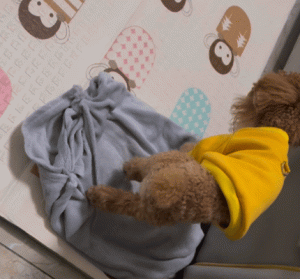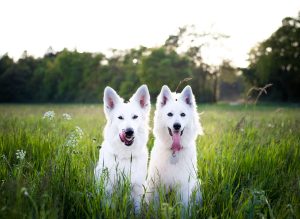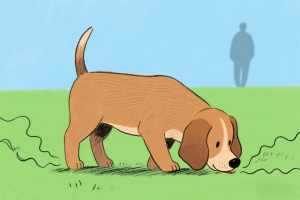When you ask a puppy if it wants to go out and play, chances are the first response you’ll get is a curious head tilt. Then, it will happily run over and place its two furry front paws on your knees. Puppies look incredibly cute when they tilt their heads at you—but have you ever wondered why they do this?
-
The More It Wants to See and Hear You Clearly, the More It Tilts Its Head
The position of their eyes, the length of their nose, and the shape of their ears can all affect a puppy’s perception of its surroundings. Puppies constantly scan your face to gather information and read your emotional state. One reason they tilt their heads when you speak to them may be to see your face more clearly—especially your eyes—to compensate for the part of your face blocked by their long snout and mouth.Try making a fist and holding it in front of your nose. You’ll experience what it’s like to be a puppy with a long snout seeing the world. Looking at a companion or object, you’ll notice that part of your view is blocked, and your ability to see the full face of your companion is limited. Naturally, if you want a clear view, you might tilt your head slightly, right?Additionally, puppies’ close-up vision isn’t as good as humans’. They tilt their heads to “focus.” Human eyes face forward, with a central fovea on the retina packed with photoreceptor cells, allowing sharp focus on objects straight ahead. Puppies’ eyes, however, are positioned on the sides of their heads, giving them a wider horizontal field of view. They don’t have a fovea—only a similar central area with fewer photoreceptors—making nearby objects appear blurry. This explains why puppies often miss small objects 10–20 inches in front of their noses. So, don’t be frustrated if your puppy seems unable to see a toy right under its nose—it really can’t see it clearly unless it steps back.Head tilting also helps puppies better locate sounds. Dogs’ ear canals are “L”-shaped, protecting their sensitive hearing (four times more sensitive than humans) from damage. They can hear subtle sounds humans cannot, but environmental noise can interfere with precise sound localization. Studies show that humans can locate sound sources with a margin of error of 1–2 degrees. In lab conditions, dogs’ sound localization error is 4–8 degrees; in the wild, for sounds coming from 300 meters away, the error can increase to about 20 degrees.

-
It Watches and Thinks, Always Trying to Understand You
In fact, your puppy might know you better than you know it. Puppies are perfect “observers” and “listeners,” never causing offense. They quietly watch your every move, learn your routines, and understand your habits: whether you sing in the shower, how long you sit in front of the TV, who you sleep next to, what you eat, and which foods you overindulge in.For puppies, who are sensitive to eye contact, subtle changes in your head position—looking up, tilting down, turning away, or facing them—can mean a lot. Even slight hand movements or body adjustments catch their attention. For instance, if you’ve been staring at your computer screen for three hours, fingers on the keyboard, and suddenly stretch your arms overhead, a puppy may interpret this as a signal: something’s changing! Its focused attention might read this as the prelude to a walk.Moreover, puppies can recognize their owners’ emotions. A study in Japan observed puppies’ reactions while their owners watched happy versus sad movies. Puppies spent more time gazing at their owners during happy movies, indicating they are sensitive to human emotional states. Researchers have also found that when puppies observe you, they tend to tilt their heads to the left, first studying your right face and recognizing smiles. Some animal behaviorists believe head tilting is an active sign of listening and processing information.
-
Through Voice and Tone, Puppies Really Can Understand You
Dogs and humans have shared roughly 18,000–32,000 years together, coexisting in similar social environments. The sounds dogs make and human speech are familiar to both. Puppies’ ears are especially sensitive to certain sounds, like the “crackling” of a chip bag. Compared to low-pitched calls, puppies respond more readily to high-pitched, repeated calls. This helps them distinguish words directed specifically at them from background noise.If they hear you quietly crying, a puppy will rush to comfort you—even if you are a stranger—using their nose to sniff, touch, and their tongue to lick. Studies show lateralization in puppies’ brains when processing human sounds. When hearing familiar commands, puppies tend to turn their heads to the right (controlled by the left hemisphere). When reacting to meaningless, artificial stimuli (like whistles), they tilt left. Like humans using selective listening, puppies pick up on keywords.When they hear familiar words, they give you that adorable “head tilt.” Puppies understand you— the more positive feedback you give them, the more cooperative they become. For example, if it tilts its head and you laugh, praise it for being cute, or reward it with a treat, it’s more likely to repeat the behavior.
So, the next time your puppy tilts its head at you, be sure to praise it—it’s truly trying its best to understand you.





